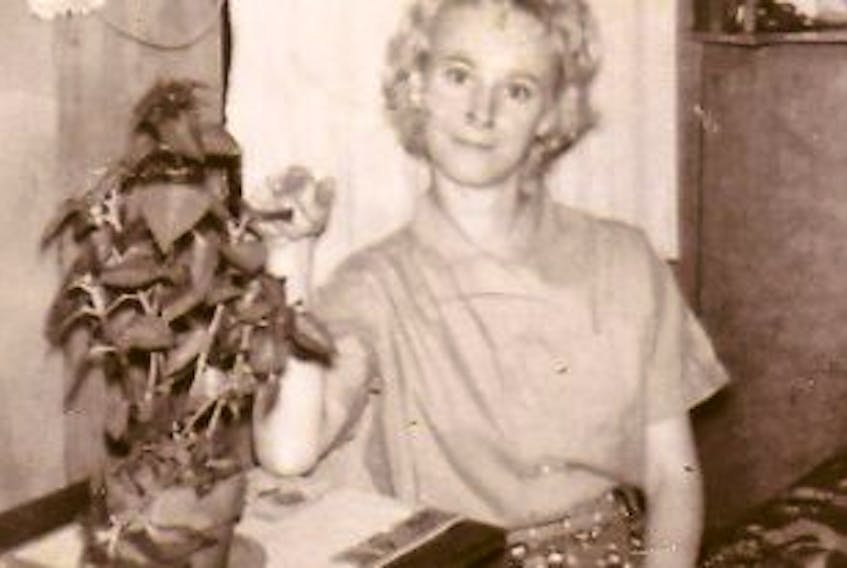ST. JOHN'S, N.L. — Going on 50 years, two generations on and far, far beyond long enough for memories to fade and people to die with secrets unrevealed.
Indeed, five decades — half a century — in cold case years may seem an impossible number to chip through.
And yet there is a daughter who never stops fighting to have those secrets uncovered, with a hope and drive greater than any sum total of the time passed.
“My own family tells me to give it up — some of my dad’s and some of Mom’s,” Melissa Carson told The Telegram.
“I remember her like it was yesterday. … So I can’t give it up, hon. I just can’t. … I just miss her.”

Melissa Carson was eight, the second oldest in the family, when her mother’s body was left on a rural road in California.
On Oct. 26, 1970, Phyllis O’Brien Carson, a 32-year-old wife and mother of four, was reported missing by her husband after she failed to return from a local bar in French Camp, Calif.
In the late 1950s, O’Brien Carson left Stephenille at the age of 18 — she was one of the 30,000 to 40,000 Newfoundland and Labrador women who married American servicemen from 1941 to the mid-1960s — and headed to California.
In 2014, her sister, Marie White, described her to The Telegram as a good person, good mother, interested in genealogy and someone who would contact family back home every couple of weeks.
And then she was gone, another American murder statistic.
Four weeks after she was reported missing, O’Brien Carson’s badly decomposed body was found by hunters on a rural road in the San Joaquin County, Calif., town, on Nov. 21, 1970.
She had disappeared from a truckstop bar that late October night after telling family she was getting a ride home with a friend.
O’Brien Carson was out for the evening with a couple of in-laws and had apparently called home to check on her children before she and her relatives went their separate ways.
No one ever came forward to report who the “unknown male” was that O’Brien Carson left with or to offer any other clues to the crime. Her capri pants found at the scene were turned inside out, indicating perhaps that she had been raped. DNA tests — when technology allowed — resulted in no usable evidence.
In 2016, with all investigative leads exhausted, the State of California offered a $50,000 reward for new information leading to the conviction in a California court of any person who committed, or is charged with, O’Brien Carson’s murder.
But the case stayed cold.
Melissa first learned at age 18, when she was told by an aunt, that her mother’s death was a homicide.
Frustrated the case had seemingly been put in a box and left on a shelf by too many sheriffs over the decades, Melissa is now hopeful that a new cold case unit appointed by the San Joaquin County Sheriff ‘s Department will find new leads.

There’s a new sheriff in San Joaquin and in late February, sheriff-coroner Patrick Withrow appointed two seasoned detectives to take on about 200 unsolved homicides and 150 missing-person cases and sexual assault cases dating back to 1964.
The department, in a news release, said its first job would be to contact the victims’ families.
The case was also featured on popular American true crime show Dateline’s website cold case spotlight this month.
Melissa also has a Facebook site, Cold Case of Phyliss O’Brien Carson, and a private detective is sorting through clues.
One question that has run through her mind is whether her mother could have been an early victim of Golden State serial killer Joseph James DeAngelo, who was caught in 2018, after he was identified through a relative’s DNA on a genealogy website.
DeAngelo's crime spree — believed to be more than a dozen homicides and at least 50 rapes, according to CNN — is said to have started in 1976, but Melissa can’t help wondering, even when she has been told it doesn’t fit his MO.
The way the O’Brien Carson cold case was handled also frustrated Utah private investigator Jason Jensen, who did a records request with the sheriff’s department, but was refused.

He is convinced it can be solved.
“I personally don’t think it’s all that challenging,” Jensen told The Telegram.
Jensen recounted the story of a witness who was at the bar with O’Brien Carson. That woman was one of the last people to see O’Brien Carson alive, and said that when she left, O’Brien Carson was still there talking to three construction workers.
The woman didn't know them, but at the time of the murder, there was freeway work being done in the area.
The bar was a place where the construction workers could cash their cheques, Jensen said, adding the location the body was found was part of the construction site.
He said if law enforcement focused on that angle, it might be able to solve it based on a process of elimination to identify persons of interest with a history of such crime.
The pool of workers could be anywhere from a couple of hundred to a couple of thousand.
Jensen wasn’t able to evaluate what police did and didn’t do, as he couldn’t see the files.
“We don’t have an open dialogue — that is what’s missing here,” he said.
But Jensen said with the cold case team and the new sheriff, he is optimistic the case will get some serious attention, and he’s not bothered by the age of it, as much as the lack of co-operation previously.
“I feel they are heading in the right direction,” he said.
As for DeAngelo, although he was in the area at the time, his behaviour is not believed to have yet evolved into murder in 1970, Jensen noted.
“It certainly was in his playground. It's possible, but not necessarily probable,” he said.
Jensen also acknowledged the change in DNA and technology over time as being positives toward solving the case
He hopes the evidence has been kept intact.
Jensen has contacted people in the French Camp community. The original bar owner is dead and, the last Jensen knew, it was a fast-food joint.
He’s also heartened by the fervour that Melissa has for the case.
“To think an offspring, a daughter or son of someone fallen to a homicide like this, it’s very uplifting to think the passion is still high for Melissa to try to get this solved, even though if she passed away she would have the solace of having all those answers in heaven. But she wants to know now. I don’t blame her,” Jensen said.

O’Brien Carson, he said, was just a young woman having a couple of drinks, wanting to socialize with adults. He said there’s no indication of an affair or a revenge killing. (Her trucker husband, Edward, who died in 1992 of leukemia, passed a polygraph test at some point in the investigation.)
She trusted the wrong person to take her home.
“We know now, decades later, you always follow the buddy system,” Jensen said. “In the 1970s, it wasn't really the thing, though. People still hitch-hiked.”
Because it was such a small community, he said, someone would have spilled something if it was a local who killer her, leading him to suspect the out-of-town construction worker theory is the most viable — someone who misinterpreted O’Brien Carson’s friendliness and then got angry when she said she wasn’t looking for sex.
For Melissa, the loss is still immense — she remembers shopping with her mother, taking the city bus downtown, her mom going to PTA meetings.
At home on the family farm, the pretty, petite O’Brien Carson tended to the cows, chickens and ducks.
“She just was sweet. … She was a good woman, a good mom. … She was calm,” Melissa said.
The only opportunity she has now to chat with her mother is in the graveyard, hoping one day she can bring news of a killer finally caught.
Twitter: @BarbSweetTweets









